Suspension Repair Cost Calculator
Suspension Repair Estimator
Estimated Repair Cost:
Important Safety Note: Always replace suspension components in pairs for balanced handling. Ignoring suspension issues increases risk of loss of control, especially in New Zealand's wet and rough road conditions.
Ever hit a pothole and felt your car wobble like it’s had one too many coffees? Or noticed a clunking sound when you go over speed bumps? Those aren’t just annoying-they’re signs your suspension is begging for help. Suspension systems don’t last forever, and when they fail, they don’t just make noise-they compromise safety, handling, and tire life. In Auckland’s rough roads and wet conditions, suspension wear happens faster than you think.
Shocks and Struts Are the Most Common Repair
Shocks and struts are the first things that go. They absorb bumps, keep tires planted, and control how your car leans in turns. Most manufacturers say they last 50,000 to 100,000 km, but in real-world driving-especially on New Zealand’s cracked highways and gravel roads-they often need replacing by 80,000 km.
Signs they’re worn: your car bounces too much after hitting a bump, the front dips when braking, or you see oil leaking from the shock body. If you do the bounce test-press down hard on one corner of the car and let go-it should settle in one or two bounces. If it keeps rocking like a boat, those shocks are done.
Struts are even more critical because they’re part of the steering and alignment system. Replacing them isn’t just about comfort-it’s about control. A worn strut can make steering feel loose or cause uneven tire wear. Many drivers don’t realize their struts are bad until they get a wheel alignment and see crazy camber angles.
Worn Ball Joints Are a Silent Danger
Ball joints connect your control arms to the steering knuckles. They let your wheels move up and down while turning. When they wear out, they don’t just squeak-they can snap. And if one breaks while you’re driving? You lose steering control.
Early signs? Clunking noises when going over bumps, especially at low speeds. You might also feel a slight vibration in the steering wheel or notice your car pulling to one side. A mechanic will check them by lifting the wheel and rocking it back and forth. If there’s any play-more than a millimeter or two-it’s time to replace them.
Ball joints don’t always give warning. That’s why they’re checked during every suspension inspection. If your car has over 80,000 km and you’ve never had them checked, get it done now. They’re cheap to fix if caught early. If they fail on the road? That’s an expensive tow and a scary story.
Control Arms and Bushings Wear Out Together
Control arms are the metal arms that hold your wheels in place. They’re connected to the frame with rubber or polyurethane bushings. These bushings are designed to absorb vibrations and let the arms move smoothly. But over time, they crack, harden, and fall apart.
When bushings go, you hear a knocking or clunking noise, especially when turning or braking. You might also feel the car wobbling at highway speeds. The worse the bushings get, the more your alignment shifts-leading to premature tire wear on the inside or outside edges.
Replacing just the bushings is sometimes possible, but most mechanics recommend replacing the whole control arm. It’s faster, more reliable, and often cheaper than paying for labor to press in new bushings. On older cars-especially those with over 100,000 km-it’s common to replace both front control arms at once. That way, you don’t end up doing the same job again in six months.
Spring Issues Are Less Common But Serious
Springs don’t wear out like shocks or bushings. They’re made of hardened steel and can last the life of the car-if they’re not damaged. But if you’ve hit a massive pothole, been in an accident, or carried heavy loads for years, they can sag or even break.
Signs of a bad spring? One side of your car sits lower than the other. Or you hear a loud metallic clang when driving over bumps. A broken spring is dangerous-it can shift the entire suspension geometry, making steering unpredictable.
Replacing springs is expensive and requires special tools. Most shops replace them in pairs, even if only one is broken. Why? Because the other one is likely weakened. If you only replace one, your car will sit unevenly, and you’ll wear out your new shocks faster.
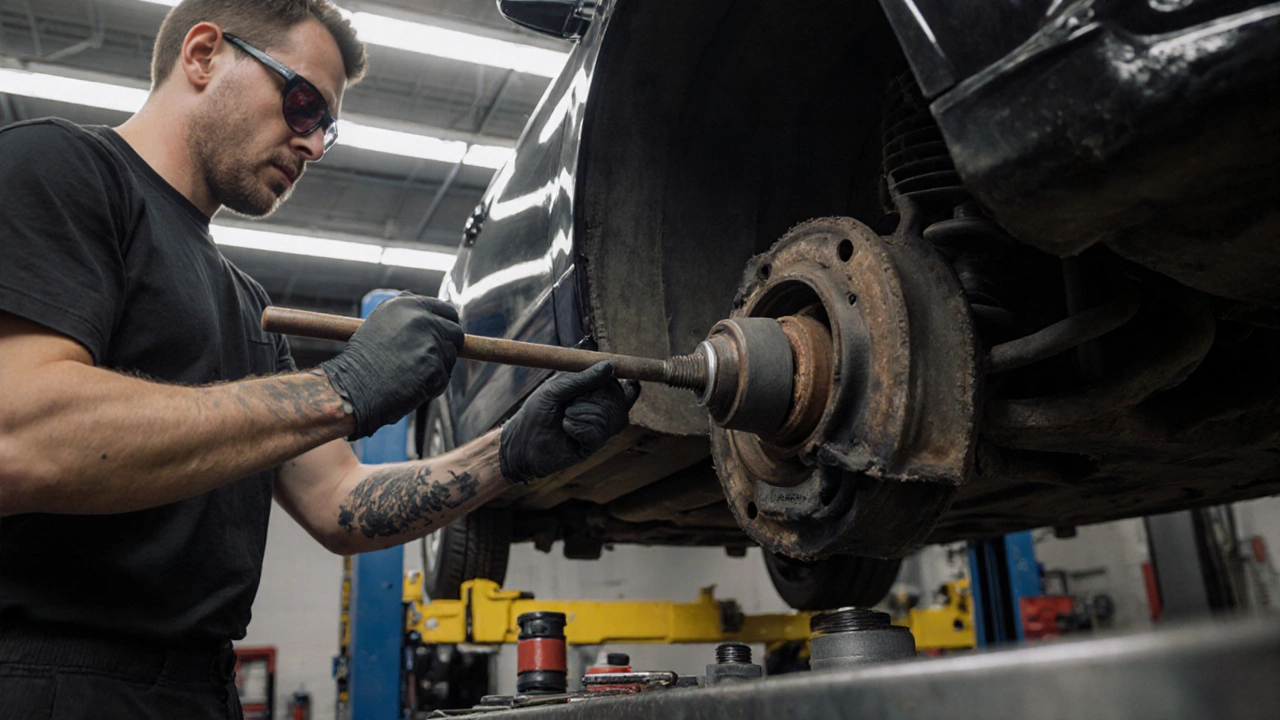
Stabilizer Bars and Links Cause Noise You Can’t Ignore
That rattling sound when you go over bumps? It’s probably your sway bar links. These small components connect the stabilizer bar to the control arms. They’re made of metal with rubber or plastic bushings inside. Over time, those bushings crack, and the metal ends wear down.
It’s one of the most common suspension noises, especially in older cars. It sounds like a loose bolt or a loose exhaust-so many people ignore it. But worn links don’t just rattle. They reduce stability in turns. Your car feels loose when you take corners, and you might notice more body roll.
Replacing them is quick and cheap. Most jobs take under an hour and cost under $150. If you hear a clunk every time you turn into a driveway, don’t wait. It’s not just noise-it’s a sign your car isn’t handling properly.
What Happens If You Ignore Suspension Repairs?
Ignoring suspension problems doesn’t just make your ride rough. It puts you at risk.
- Uneven tire wear: Worn suspension parts cause tires to wear on one side. You might go through a set of tires in half the time.
- Longer stopping distances: If your shocks are worn, your car doesn’t stay level when braking. The front dips, and the rear lifts-reducing grip. That adds meters to your stopping distance.
- Damage to other parts: A bad ball joint can destroy your steering knuckle. Worn struts can damage your wheel bearings. Suspension issues cascade.
- Loss of control: In wet conditions or during sudden maneuvers, a failing suspension can make your car slide or spin.
There’s no such thing as "it’s not bad yet." Suspension wear is progressive. Once it starts, it gets worse fast. And in New Zealand’s rainy weather, a compromised suspension can mean the difference between a safe stop and a crash.
How Often Should You Check Your Suspension?
Don’t wait for noise or wobbling. Get your suspension checked every 20,000 km-or every year, whichever comes first. If you drive on gravel roads, rough urban streets, or carry heavy loads regularly, check it every 10,000 km.
During a suspension inspection, a good mechanic will:
- Visually inspect shocks and struts for leaks or damage
- Check ball joints for play using a pry bar
- Look at control arm bushings for cracks or separation
- Test sway bar links for looseness
- Measure ride height to spot sagging springs
- Review tire wear patterns
Most of these checks take less than 15 minutes. The cost? Often free if you’re getting a service elsewhere. It’s the cheapest safety check you’ll ever do.
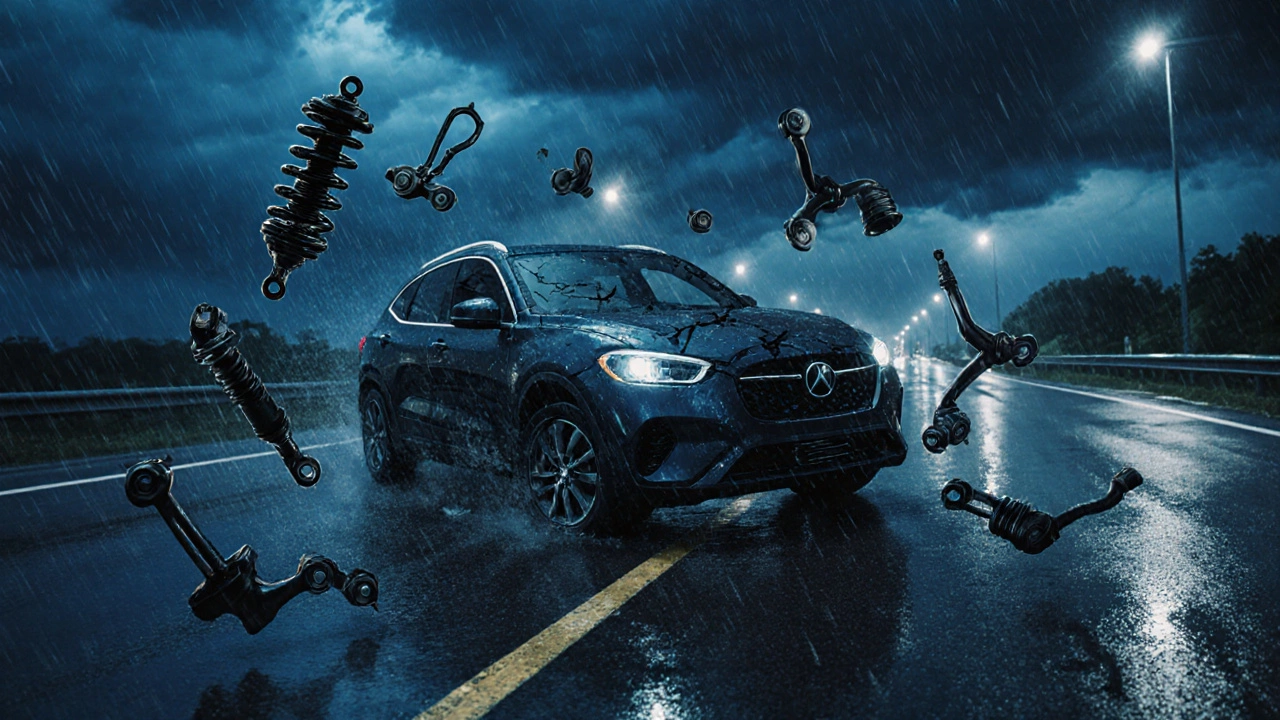
What to Expect in Cost and Time
Here’s what you’ll typically pay for common repairs in New Zealand (as of 2025):
| Part | Parts Cost | Labor Cost | Total Estimate |
|---|---|---|---|
| Shocks (pair) | $200-$400 | $150-$250 | $350-$650 |
| Struts (pair) | $300-$600 | $250-$400 | $550-$1,000 |
| Ball joints (front, pair) | $120-$250 | $150-$200 | $270-$450 |
| Control arms (front, pair) | $250-$500 | $200-$350 | $450-$850 |
| Sway bar links (pair) | $60-$120 | $80-$120 | $140-$240 |
Prices vary by brand and car model. Luxury or performance cars cost more. But even the cheapest repairs are worth it. Replacing worn parts early saves you money on tires, brakes, and alignment fixes later.
Can You Drive With a Bad Suspension?
You can-but you shouldn’t. Driving with worn suspension is like driving with bad brakes. You might not crash right away, but you’re increasing your risk every time you hit the road.
Some people think, "It’s just a little noisy," or "It still handles fine." But suspension wear doesn’t show up in the way you feel-it shows up in how your car responds when you need it most. A sudden swerve to avoid a pedestrian. A wet corner at 60 km/h. A pothole you didn’t see. That’s when worn suspension fails.
If you notice any of the signs-bouncing, clunking, pulling, uneven tire wear-get it checked within a week. Don’t wait for it to get worse. Suspension isn’t a luxury. It’s your car’s connection to the road. And when that connection breaks, so does your safety.
How do I know if my shocks are bad?
Look for oil leaks on the shock body, excessive bouncing after hitting a bump, or the front of your car dipping when you brake. Do the bounce test: press down hard on one corner of the car and let go. If it bounces more than twice, the shocks are worn out.
Can I replace suspension parts myself?
You can replace sway bar links or shocks if you have basic tools and experience. But struts and control arms require spring compressors and alignment afterward. Most people should leave those to professionals. Improper installation can cause serious safety issues.
Do I need to replace both sides at once?
Yes, for shocks, struts, control arms, and ball joints. Replacing only one side creates an imbalance. Your car will handle poorly, and the new part will wear out faster. It’s not cheaper to do one side-it’s riskier and more expensive in the long run.
How long do suspension parts last?
Shocks and struts last 80,000-100,000 km under normal driving. Ball joints and bushings often last 100,000-150,000 km, but rough roads cut that in half. Springs can last the life of the car unless damaged. Always inspect them every 20,000 km.
Is suspension repair covered by warranty?
Factory warranties rarely cover suspension parts unless it’s a manufacturing defect. Aftermarket warranties might cover them, but only if you’ve had regular maintenance records. Most repairs are out-of-pocket, which is why regular inspections are so important.
What’s Next?
If your car is showing any of these symptoms, don’t delay. Suspension problems don’t fix themselves. They get worse. And the longer you wait, the more expensive it becomes.
Book a suspension inspection today. Even if it turns out to be nothing, you’ll know for sure. But if it’s worn parts? Fixing them now means safer drives, longer tire life, and peace of mind-especially on New Zealand’s unpredictable roads.
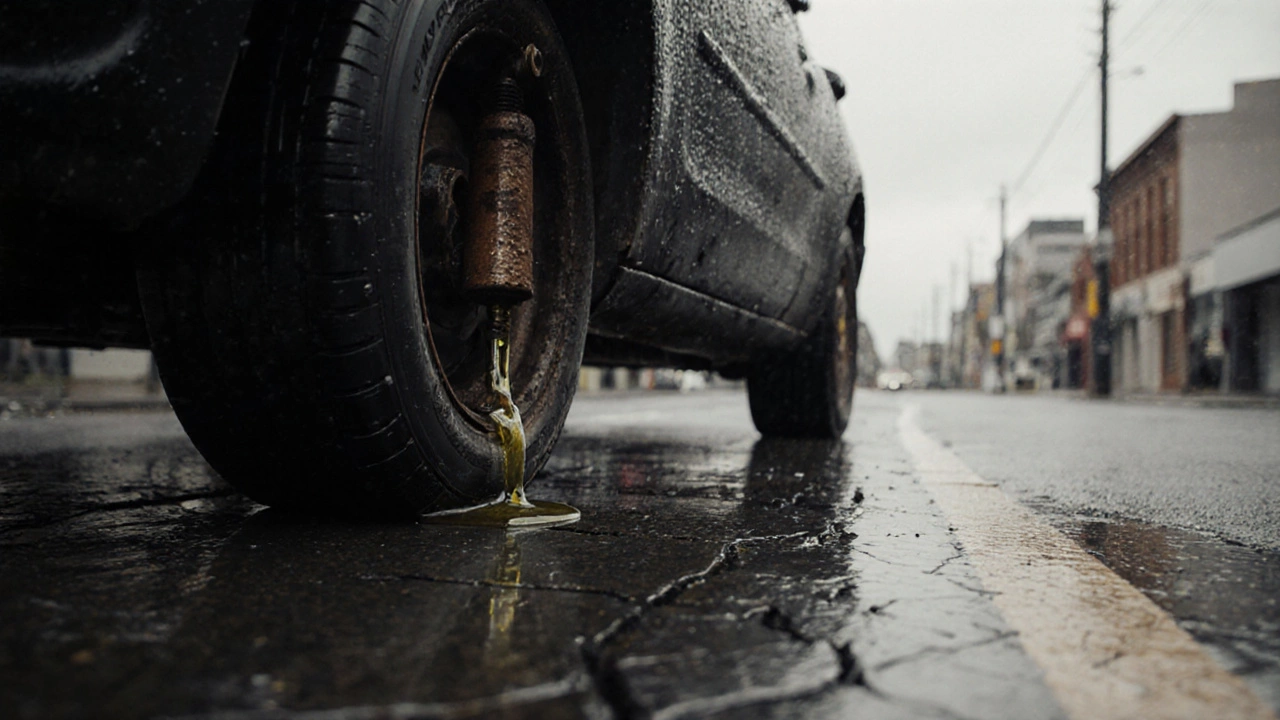
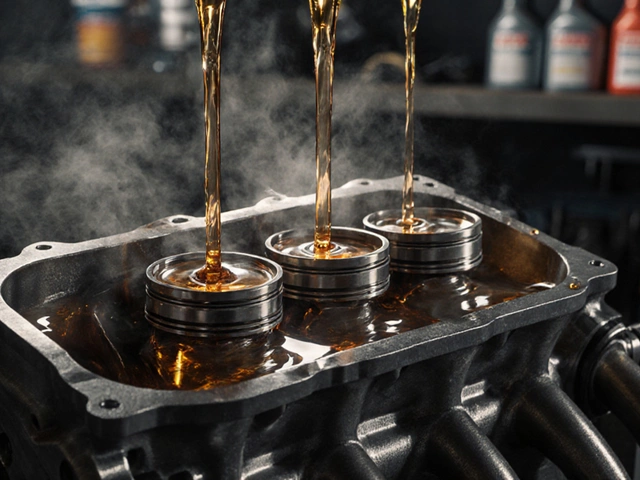
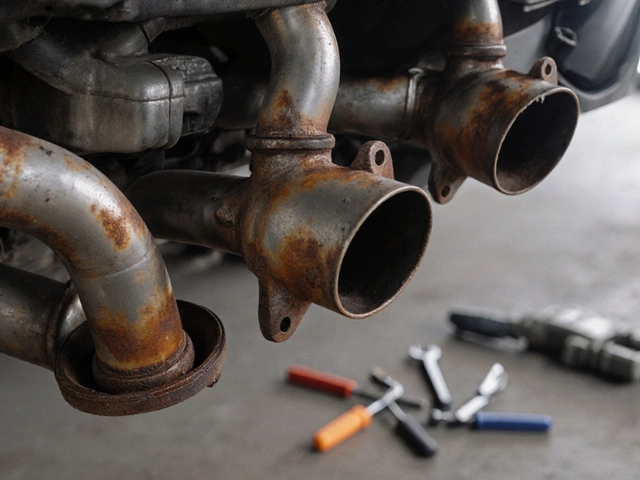

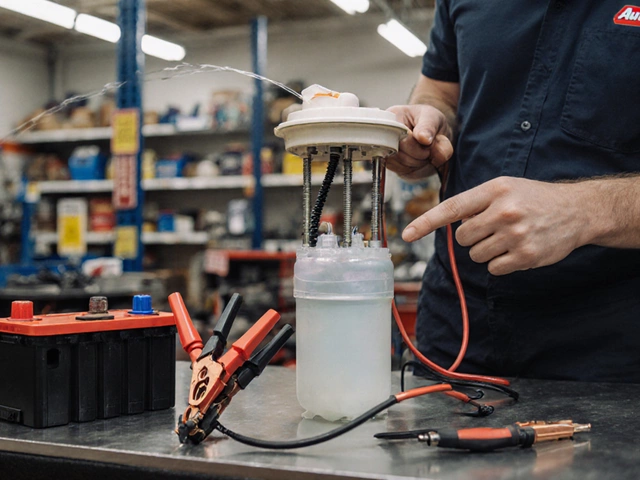

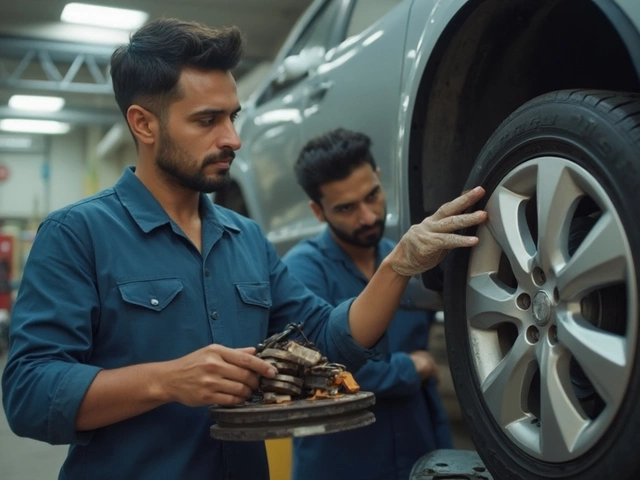
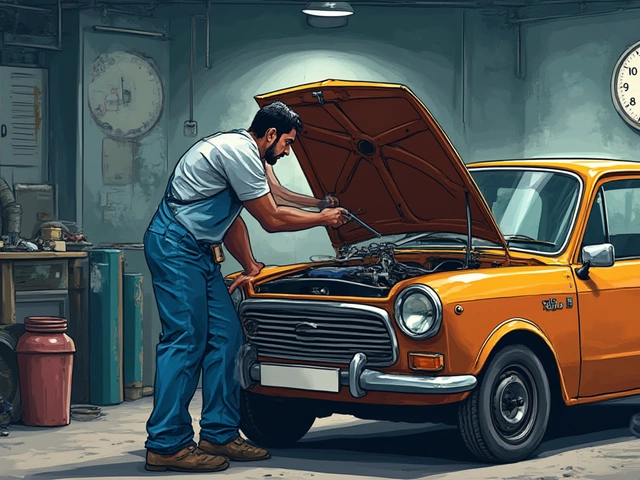


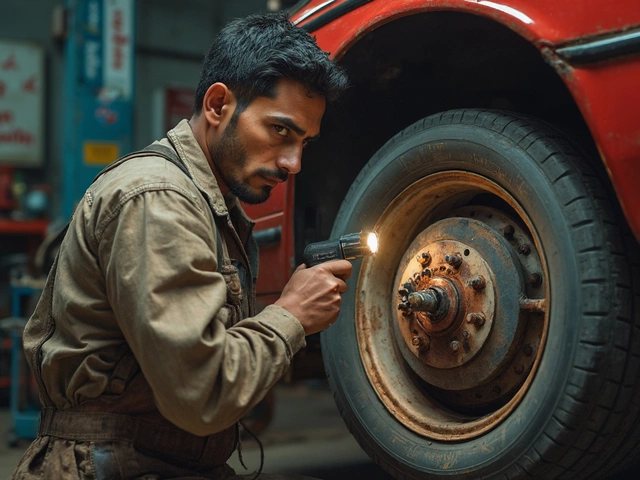
Write a comment